Music / Textual analysis




Are you sure you want to delete your annotation? You cannot undo this action.
When studying a music video, it is always helpful to break it down and analyse some of the key shots.
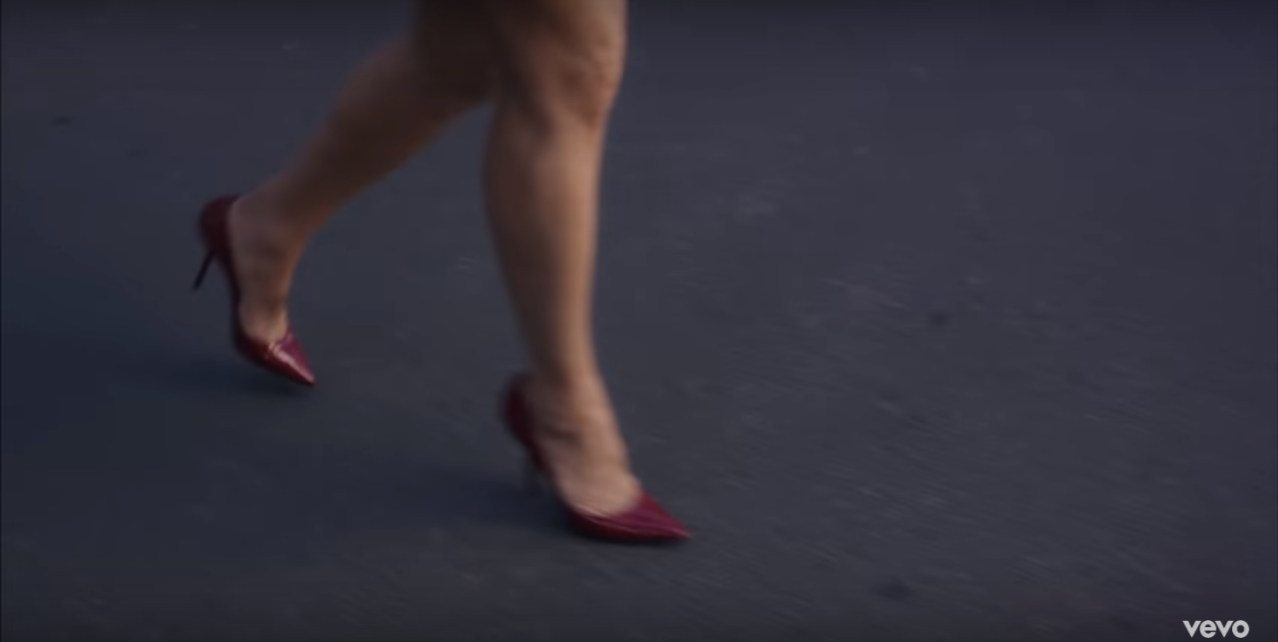
The opening shot is a medium shot of a woman’s legs, the camera moving along with her. This is an intertextual reference to many 1980s music videos, for example ‘Uptown Girl’ by Billy Joel.
Unusually, after this, the woman does not become a main character in the rest of the video. Her main role seems to be as an object of desire for Mars and his friends, allowing them to bond in their admiration of her.
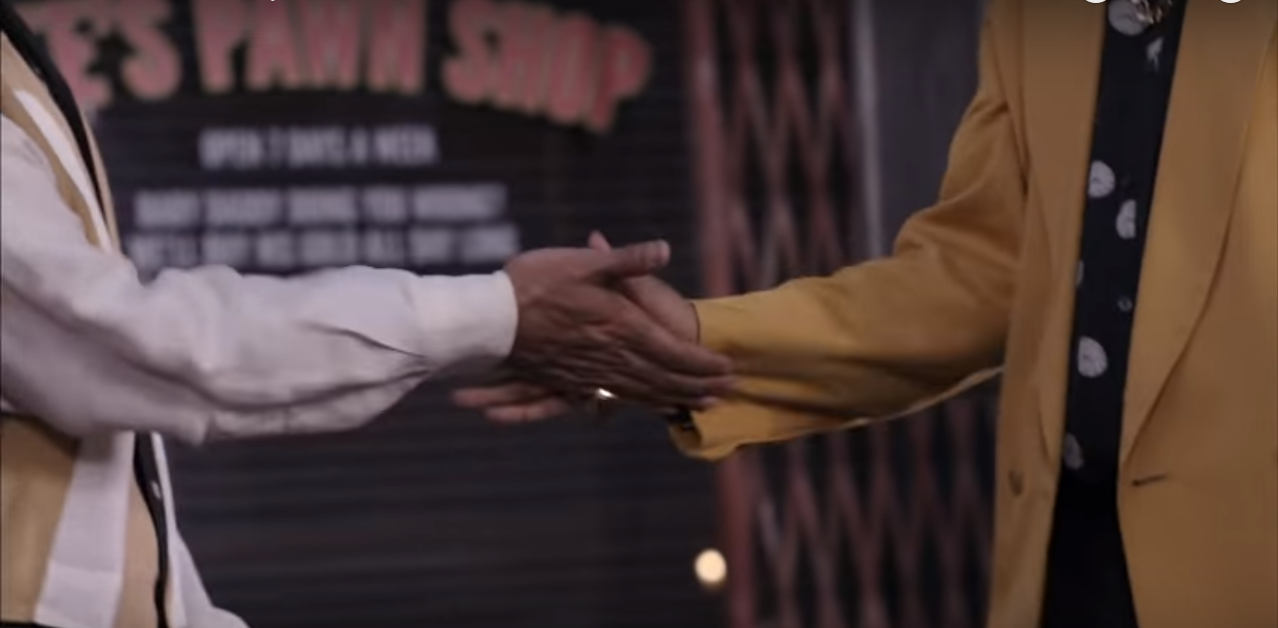
Intercut with the red-heeled woman passing are close-up shots of handshakes, back slaps etc., all symbols of male friendship. This is a major theme throughout the video.
The shot is focused on the foreground, but behind we can see the sign for a pawn shop, a typical element of a lower class, ‘ghetto’ location.
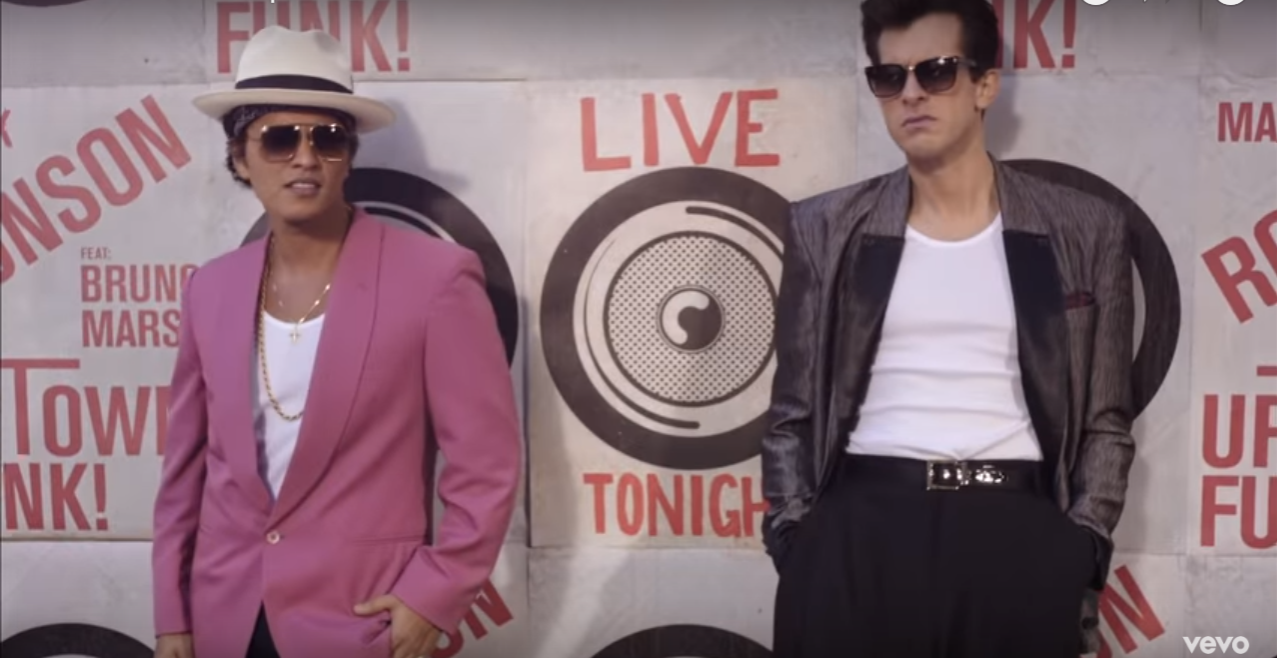
The artists (Ronson, on the right, co-wrote and produced the song) are introduced in this medium two-shot that accentuates their friendship, even though the positioning connotes that they are being ‘cool’- leaning against the wall, barely acknowledging each other.
Their costume - white t-shirts beneath suit jackets, high-waisted trousers - echo the street styles of the 1980s, provoking a sense of nostalgia for older audiences.
The posters in the background advertise their gig. This reinforces the importance of the live ‘authentic’ music experience that is replicated in the final section of the video.
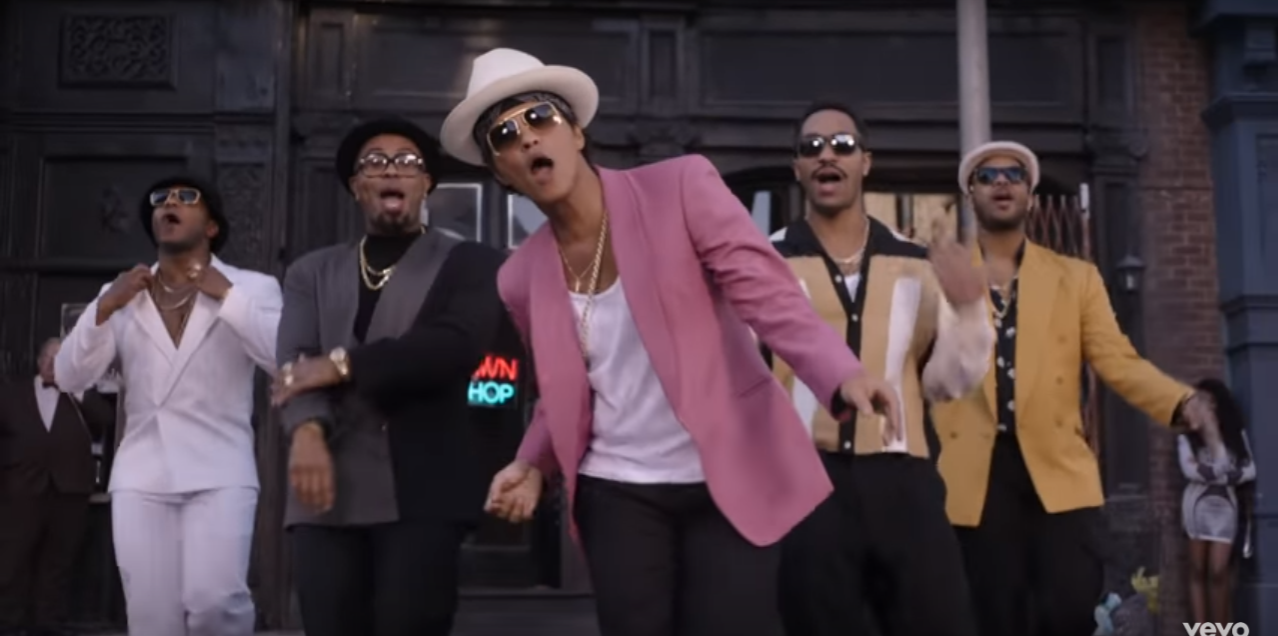
This medium group shot is framed to place the artist in the forward centre position, and the rest of the band just behind him. His pink jacket also makes him stand out from the other performers, and the grimy urban background location.
Despite establishing Mars as the artist, there is plenty to show that they are part of a team and are close friends. They all wear shades and single gold chains and are walking and dancing in time. This emphasises the feel-good tone of the song, and the camaraderie of the performers.
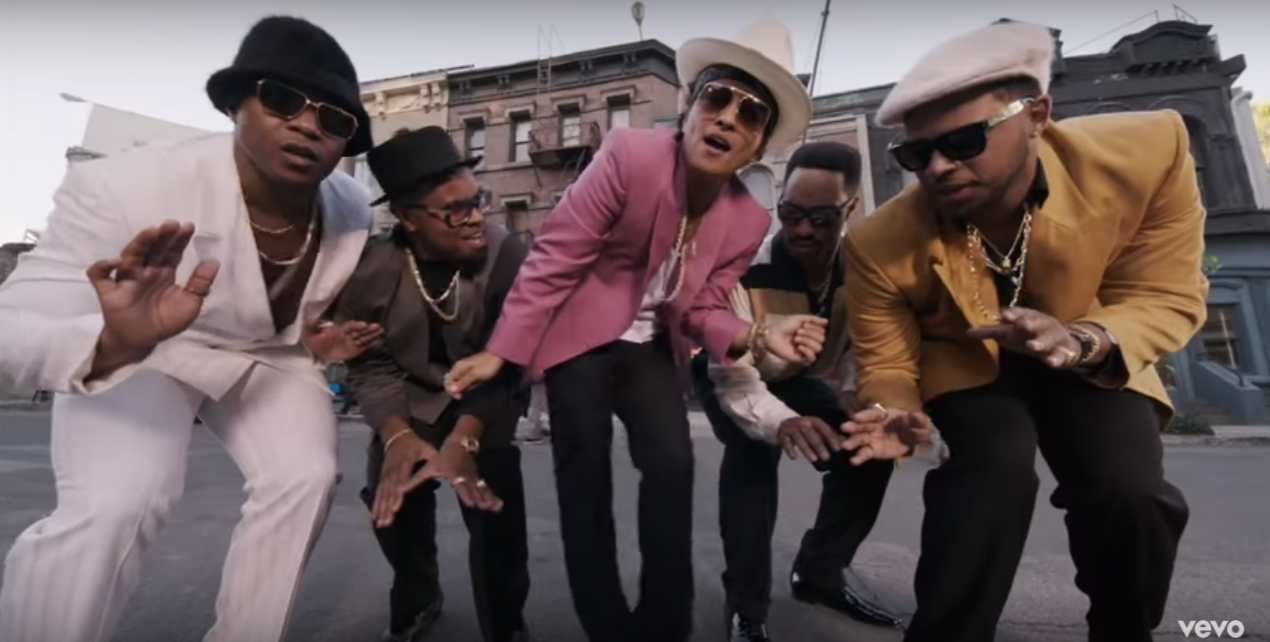
Another group medium shot, but from a low angle. This usually makes characters seem strong or superior, but here it is used differently. Mars and his band lean down to sing the next part of the song directly to us, almost like they’re on stage and picking us out from the crowd (which links to the live gig sequence later). It also makes the viewer feel like part of their ‘gang’.
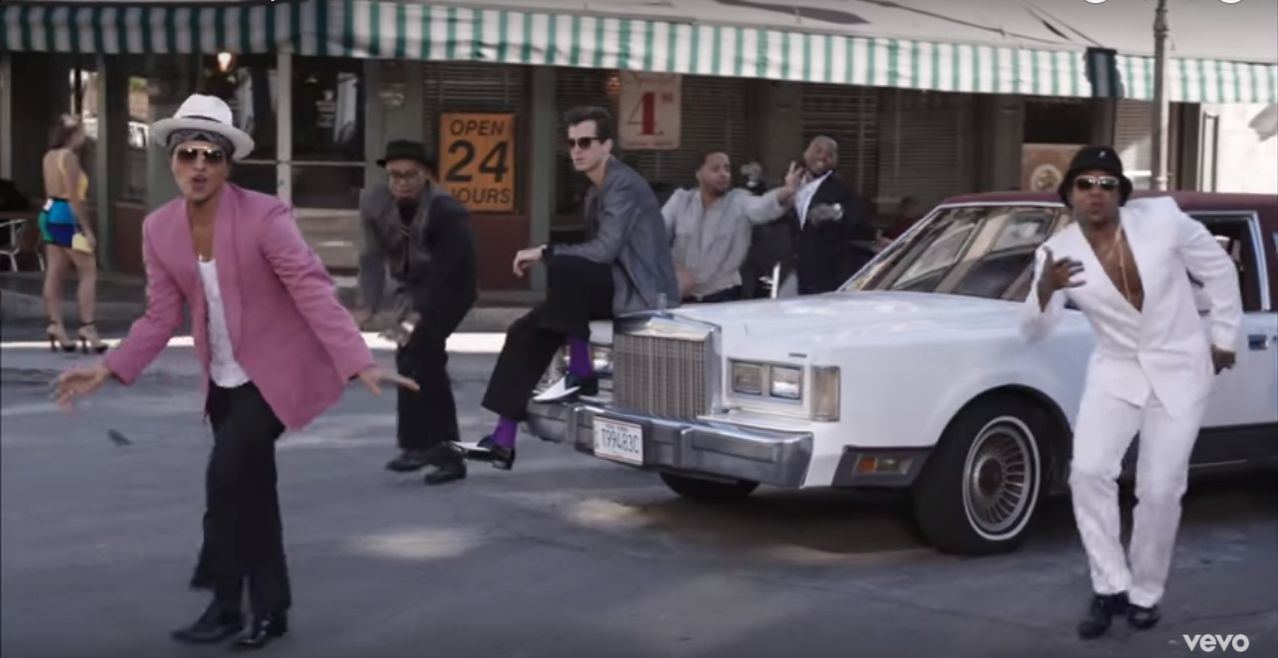
The wide angle long shot again includes the whole group together, and the first half of their limo.
The prop of the stretch limo clashes with the lower class urban neighbourhood, emphasised by the white paintwork. Limos are usually symbolic of wealth and status. Though the performers seem extremely proud of their vehicle and are dancing around it to show off, there is something endearingly boyish about their enthusiasm.
Stretch limos are often associated with male bonding situations such as stag/bachelor parties, seems to symbolise the camaraderie between the characters in this shot.
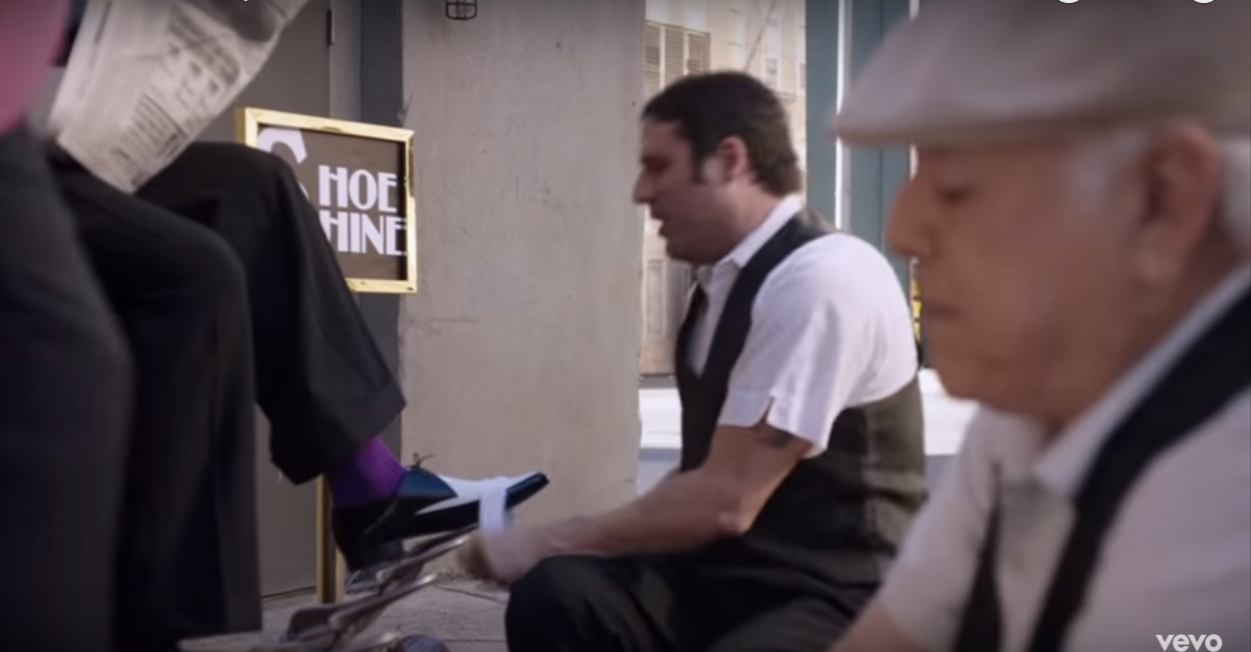
The ‘shoeshine boy’ is typically represented as African-American, and as such is often used a symbol of racial inequality. In this video, the shoe-shiners are older white men, subverting this stereotype.
Getting a shoe-shine could also be seen as a traditional form of male grooming, adding to Mars’ humorous vanity in the video.
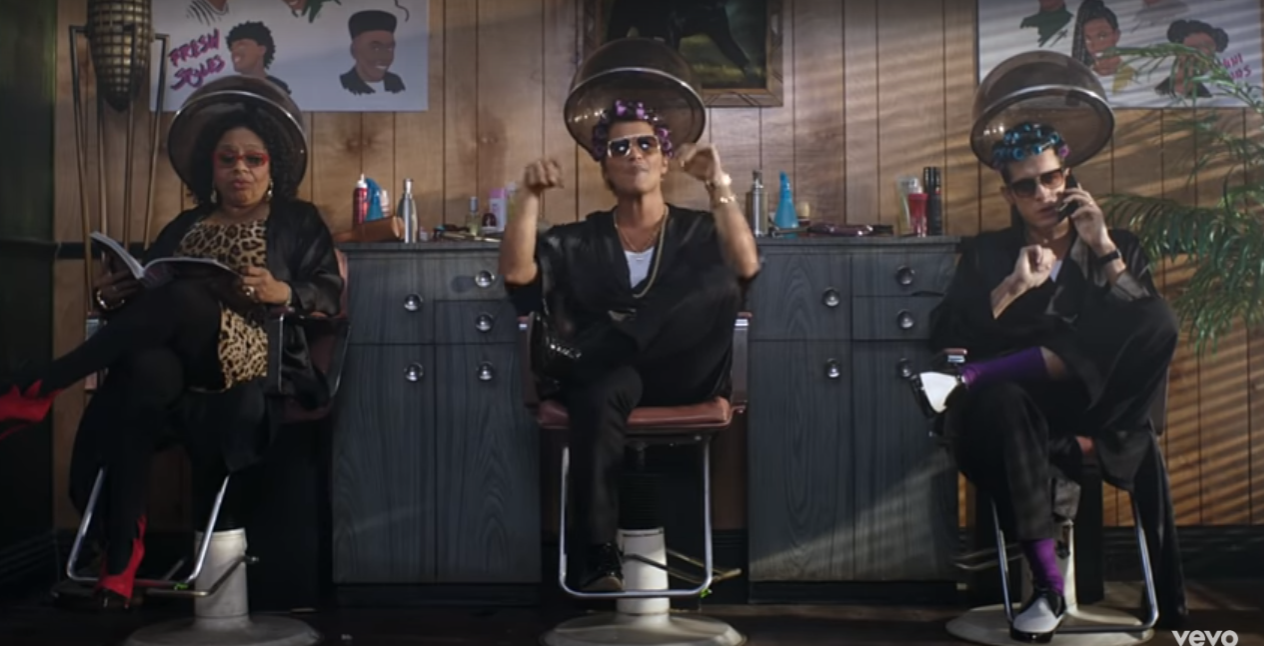
This wide-angle long shot shows Mars and Ronson with an elderly black woman in a female hair salon. Posters and props also indicate this is an African-American salon.
The male characters seem comfortable (Ronson is casually chatting on his phone, Mars continues singing and dancing with his arms) and enjoy having their hair styled using rollers, adding to the humour and ‘feel-good’ element of the video. This subverts traditional male stereotypes, as enjoying beauty and hair-styling has conventionally been associated with femininity. It also connotes a message of racial equality in the world of the video (also reflected in Mars’ multi-ethnic band).
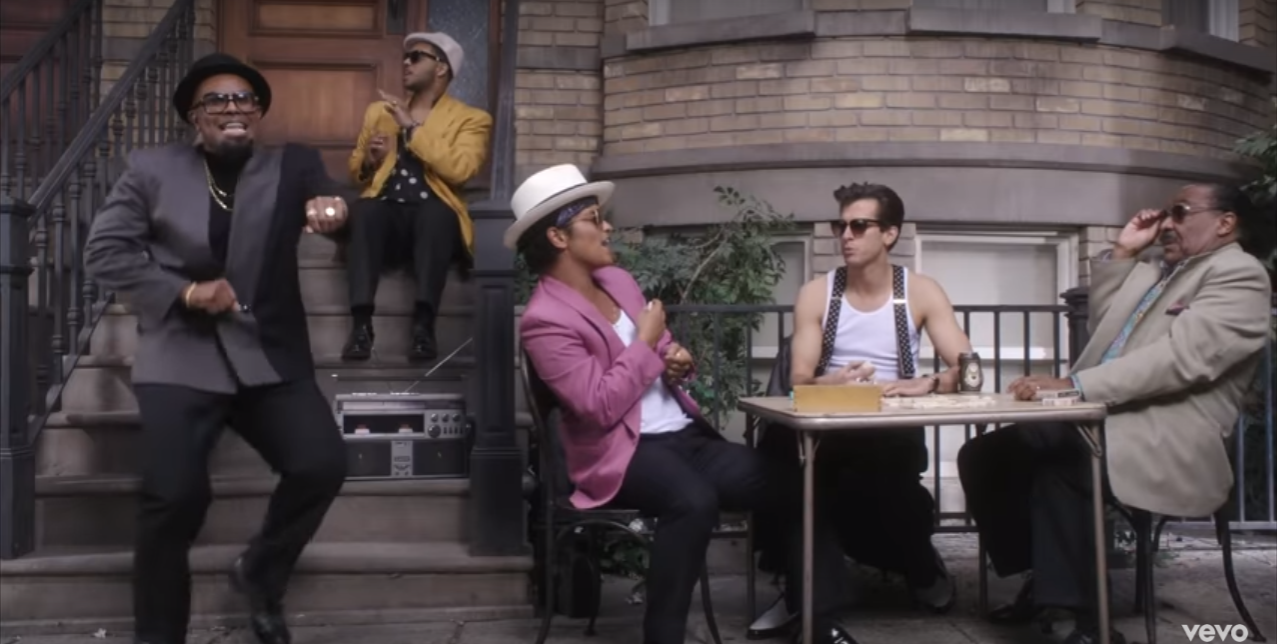
A wide-angle group shot shows Mars, Ronson and one of the band playing dominoes on the street (a hobby often associated with lower class, elderly African-American men), whilst other band members continue singing and dancing.
The group shot shows the connection and easy friendship between the men, even though they are doing their own individual thing.
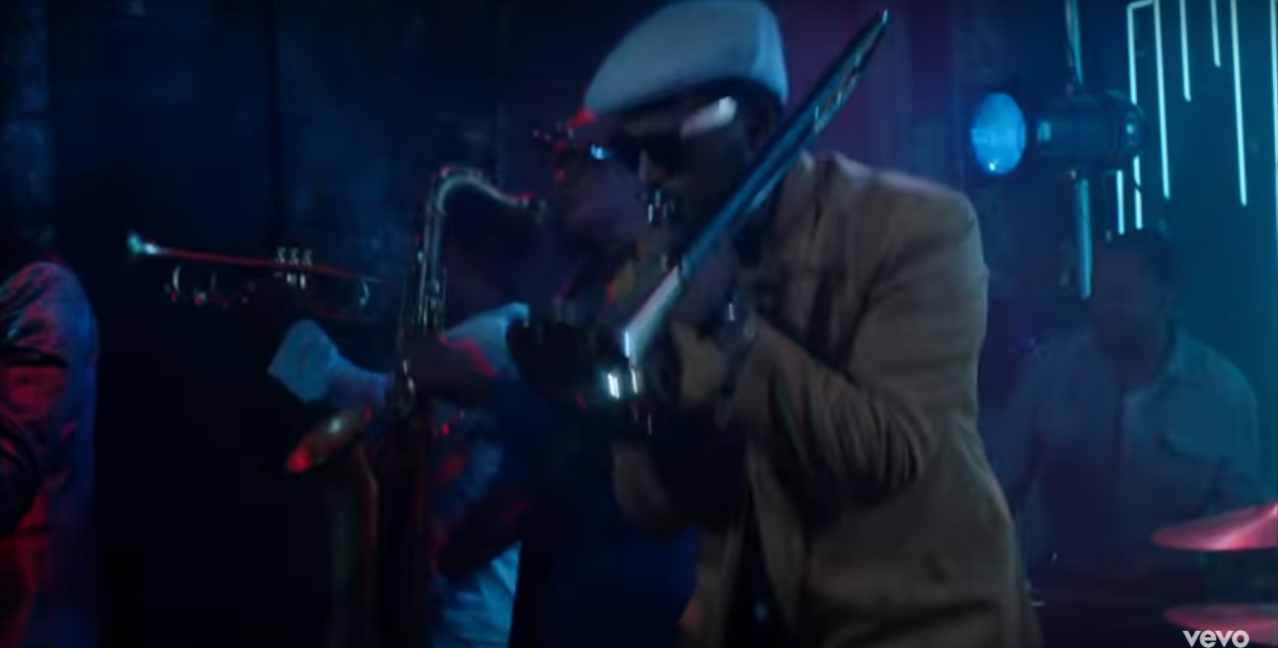
The location shifts to a dark, hot nightclub for the last part of the video.
Here, each of the musicians is shown playing in medium and MCU shots. Previously, the members of the band have tended to be framed in the same shot, but now they are given their own ‘spotlight moment’ in which to show their musical ability (and highlight their contribution to the song itself).
Medium shots also allow us to see that, despite change of location, the band are all still moving and dancing in time with the same beat as earlier scenes, creating a fluidity between their on and off stage personas.
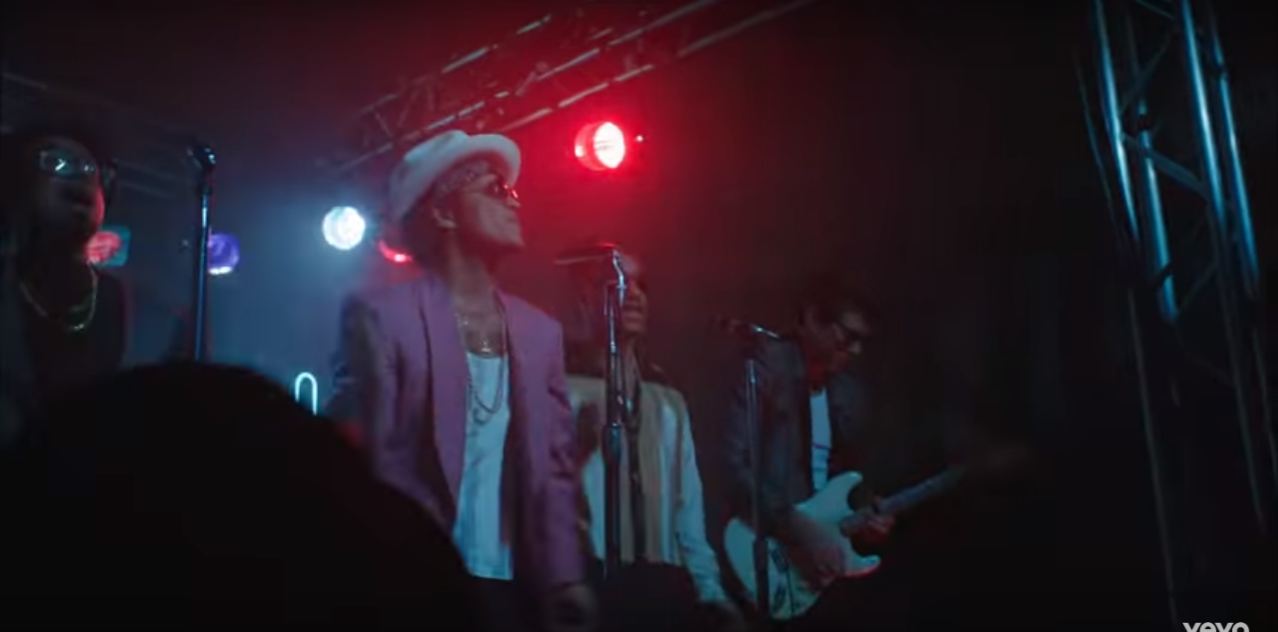
Much of the last section is shot from a low angle, as if the viewer is now part of the crowd at the gig. The heads of other crowd members bob in front of the camera, but this replicates the exciting live experience of the song.
This reinforces the ‘authenticity’ of the song and the musical skill of the performers and might appeal to audiences that may be suspicious of the superficiality and artificiality of other modern pop music.